Website: Echobox
Specifications:
Warranty: 3 years!
Accessories:
Design & Build Quality:
The Finder X1 is a very compact in-ear earphone, featuring a very sturdy and elegant design. The small earpieces are probably the best part of the X1, made of strong titanium material which is also very light. With its conical/trumpet-like design, the rear part is very narrow, putting the 9mm dynamic driver closer to the nozzle. The filters are also made from a strong metal material and are very easy to change. The 3 filters are identical in size and shape, and just different on the mesh color and material. They're a bit small, though, and could be easy to lose.
Parting from the shells, the cable features a non-standard strain relief, which is totally internal instead of being added to the outer cable exit, and while the cable may look a bit thin, it looks of good quality and rather resistant. If anything it's a bit springy and just above average in cable noise. The y-split and slider are very flexible. Similarly, the straight plug is also made of metal and has the short rubber cover that acts as relief.
Fit, Comfort, Isolation:
The so compact design and longer than standard and softer eartips, might cause the X1 to be a bit tricky to fit at first. The nozzle/filter width is standard, so tip-rolling is very easy; Spinfit or Sony Hybrids can be used as well. As for comfort, the Finder X1 is really very comfortable, and with its small, light weight and round design, it is barely noticed.
Isolation is decent, a bit above average, but wind noise can be an issue.
Sound:
The tuning filters option is not a really new feature for an in-ear earphone nowadays, and not the first one I tried either. The X1 nozzles only differ in the type of the mesh used on each one. The changes in sound are still well noticed, but they still follow a similar presentation.
While are labeled as 'Bass', 'Reference' and 'Treble', the Finder X1 still has a strong dominant tuning regardless the one used. The 'default' signature of the X1 is of a mild v-shaped sound not very different from any other traditional lively sounding earphones, but the emphasis and forwardness of each frequency can be slightly adjusted with the corresponding nozzle filter. The pronounced v-shaped sound signature carries a strong sense of warmth and the low-end is strongly enhanced and could be easily categorized as a heavy bass one with a slightly bright and energetic upper end.
Silver filter - Bass:
With the Bass filter the X1 turns into a rather heavy bass earphone with a sharp v-shaped sound signature. The bass is very dominant, powerful and well extended, offering a good balance between impact from the mid-bass and depth from the sub-bass region. Control is good for its current $100 price among IEMs. Even though, the very strong midbass hump and the addition of the slower bass nature contribute in making X1 sound somewhat bloated which tends to overshadow the rest of the sound. The overall bass presentation shares some similarities with the Fidue A73 hybrid and Lear A1d in its most bassy setup.
The midrange follows the usual v-shaped rule; fuller thanks to the strong low end response, but also quite recessed. Detail is not too high and there's certain lack of definition and depth. Bass bleed into the mids is strongly noticed as well, to the point of being rather veiled, which I found to be very annoying. The tonality of the X1's Bass setup is dark and not very liquid, and it's more focused into instruments rather than in vocals. Female vocals suffer the most in texture and clarity and usually sound unnatural. There's also a bit of extra sign of harshness at the upper-mids.
Treble is the less pleasant part of this Bass filter. Not as recessed as the midrange but its presentation is less competent. While it has enough energy due its lively signature, it's still overly dark and doesn't have enough sparkle. A little sharp, with a certain peak at the lower treble and has the tendency to accentuate harshness and sibilance. Not a total deal breaker, especially when compared to some 'hot' treble IEMs like the GR07 or the more artificial S5, but cannot be considered as natural. It has enough energy to keep it from sounding dull but less attention calling as with the rest of the filters.
Black filter - Reference:
While I found very difficult to like the sound from the Bass filter, the next included filter proved to be much better in most aspects making the Finder X1 a more enjoyable earphone. The less mid-bass strength and overwhelming low-end is now taken under control and the X1 gains a more 'musical' presentation. However, the word “reference” is rather misleading and far from how I'd describe it; if anything the 'Treble' filter gets closer to be referred as a 'reference' sound. Anyway, with the 'Reference' filter the signature is still v-shaped, but the presentation is much more convincing with a more competent level of clarity and detail.
The bass is moderately enhanced, still with strong impact but with higher quality and control. It gets a bit boomy but definitely not as bass-heavy as with the previous Bass setup. There's undoubtedly better overall balance together with a more natural character, nicer texture and well rounded lower notes. Speed is quite good as well, and the less bloat gives place to a deeper and more effortless sub-bass reach. Not a bass cannon anymore, although still warmer than the MA750. The Nebula One is similar in terms of pure quantity, but the more open design and larger dynamic driver inside the AAW option offers a more spacious and faster bass response.
Even though it keeps its default v-shaped signature, the midrange is significantly less recessed. In fact, it has the most forward presentation among the 3 filters. The boosted bass adds a strong sense of warmth and richness that when combined with the better clarity from the slightly boosted upper mids and lower treble makes the Finder X1 a much more enjoyable earphone. It's has a good mix of resolution and fun factor that makes it stand out among its similar priced competitors.
Treble performance is probably the best with the 'reference' filter. It maintains the conventionally lively v-shaped sound, but it is not harsh or sibilant at moderate listening volumes. It is reasonably prominent and crispy but remains smooth at the upper end. Some sense of air is missing but there is almost no presence of grain or an annoying peak.
Red filter - Treble:
And lastly, the red 'Treble' filter. It maintains the plentiful bass impact of the 'Reference' filter but balances it more with the treble. Bass is noticeably less enhanced with an overall tone that is slightly warm, a little thinner in body and texture but tighter and with better depth and less annoying mid-bass hump and just a minimal amount of bloat. For most listeners it's a good trade of quantity for quality, but a basshead might still prefer the 'reference' setup.
The midrange is still recessed with a more traditional v-shaped sound signature; however, it is also the most clear. Clarity is very good, still slightly limited by the less mids forwardness and bass presence. Detail level is quite good for an enhanced low-end model but falls short of some flatter-sounding earphones, like the VE Duke, DBA-02/B2 or the more accurate and slightly mid-forward Hifiman RE600. Vocals are less favorable than with the 'reference' filter, due their thinner and drier texture. However, instruments separation and layering is very competent.
Lastly, from the upper mids and all the way up to the higher treble, the Finder X1 gains a rather high level of energy boost falling under the 'bright' earphones group. A tad splashy and less forgiving with lower quality recordings, though not as revealing as with more analytical-treble IEMs. Extension is as good as with the lows, too.
The soundstage on the Finder X1 does not depend much on the filter setup, not overly wide and open sounding, yet far from being intimate. The use of a more spacious DAP or some extra amplification can help in this regard, although the X1 is very little source dependent.
Specifications:
- Driver: Dynamic 9.2mm PEEK (Polyether Ether Ketone; check Wiki for more info)
- Cable: SPC (Silver-Plated Copper), 1.2m length, 3.5mm plug
- Impedance: 22 ohm
- Sensitivity: 96 dB
- Frequency: 15Hz - 35KHz
Warranty: 3 years!
Accessories:
- 3 pairs of single flange eartips (S/M/L)
- 1 pair of dual-flange eartips
- 1 pair of triple-flange eartips
- 1 pair of Comply Foam T-400 (M size)
- 3 tuning filters
- Carry case
Design & Build Quality:
The Finder X1 is a very compact in-ear earphone, featuring a very sturdy and elegant design. The small earpieces are probably the best part of the X1, made of strong titanium material which is also very light. With its conical/trumpet-like design, the rear part is very narrow, putting the 9mm dynamic driver closer to the nozzle. The filters are also made from a strong metal material and are very easy to change. The 3 filters are identical in size and shape, and just different on the mesh color and material. They're a bit small, though, and could be easy to lose.
Parting from the shells, the cable features a non-standard strain relief, which is totally internal instead of being added to the outer cable exit, and while the cable may look a bit thin, it looks of good quality and rather resistant. If anything it's a bit springy and just above average in cable noise. The y-split and slider are very flexible. Similarly, the straight plug is also made of metal and has the short rubber cover that acts as relief.
Fit, Comfort, Isolation:
The so compact design and longer than standard and softer eartips, might cause the X1 to be a bit tricky to fit at first. The nozzle/filter width is standard, so tip-rolling is very easy; Spinfit or Sony Hybrids can be used as well. As for comfort, the Finder X1 is really very comfortable, and with its small, light weight and round design, it is barely noticed.
Isolation is decent, a bit above average, but wind noise can be an issue.
Sound:
The tuning filters option is not a really new feature for an in-ear earphone nowadays, and not the first one I tried either. The X1 nozzles only differ in the type of the mesh used on each one. The changes in sound are still well noticed, but they still follow a similar presentation.
While are labeled as 'Bass', 'Reference' and 'Treble', the Finder X1 still has a strong dominant tuning regardless the one used. The 'default' signature of the X1 is of a mild v-shaped sound not very different from any other traditional lively sounding earphones, but the emphasis and forwardness of each frequency can be slightly adjusted with the corresponding nozzle filter. The pronounced v-shaped sound signature carries a strong sense of warmth and the low-end is strongly enhanced and could be easily categorized as a heavy bass one with a slightly bright and energetic upper end.
Silver filter - Bass:
With the Bass filter the X1 turns into a rather heavy bass earphone with a sharp v-shaped sound signature. The bass is very dominant, powerful and well extended, offering a good balance between impact from the mid-bass and depth from the sub-bass region. Control is good for its current $100 price among IEMs. Even though, the very strong midbass hump and the addition of the slower bass nature contribute in making X1 sound somewhat bloated which tends to overshadow the rest of the sound. The overall bass presentation shares some similarities with the Fidue A73 hybrid and Lear A1d in its most bassy setup.
The midrange follows the usual v-shaped rule; fuller thanks to the strong low end response, but also quite recessed. Detail is not too high and there's certain lack of definition and depth. Bass bleed into the mids is strongly noticed as well, to the point of being rather veiled, which I found to be very annoying. The tonality of the X1's Bass setup is dark and not very liquid, and it's more focused into instruments rather than in vocals. Female vocals suffer the most in texture and clarity and usually sound unnatural. There's also a bit of extra sign of harshness at the upper-mids.
Treble is the less pleasant part of this Bass filter. Not as recessed as the midrange but its presentation is less competent. While it has enough energy due its lively signature, it's still overly dark and doesn't have enough sparkle. A little sharp, with a certain peak at the lower treble and has the tendency to accentuate harshness and sibilance. Not a total deal breaker, especially when compared to some 'hot' treble IEMs like the GR07 or the more artificial S5, but cannot be considered as natural. It has enough energy to keep it from sounding dull but less attention calling as with the rest of the filters.
Black filter - Reference:
While I found very difficult to like the sound from the Bass filter, the next included filter proved to be much better in most aspects making the Finder X1 a more enjoyable earphone. The less mid-bass strength and overwhelming low-end is now taken under control and the X1 gains a more 'musical' presentation. However, the word “reference” is rather misleading and far from how I'd describe it; if anything the 'Treble' filter gets closer to be referred as a 'reference' sound. Anyway, with the 'Reference' filter the signature is still v-shaped, but the presentation is much more convincing with a more competent level of clarity and detail.
The bass is moderately enhanced, still with strong impact but with higher quality and control. It gets a bit boomy but definitely not as bass-heavy as with the previous Bass setup. There's undoubtedly better overall balance together with a more natural character, nicer texture and well rounded lower notes. Speed is quite good as well, and the less bloat gives place to a deeper and more effortless sub-bass reach. Not a bass cannon anymore, although still warmer than the MA750. The Nebula One is similar in terms of pure quantity, but the more open design and larger dynamic driver inside the AAW option offers a more spacious and faster bass response.
Even though it keeps its default v-shaped signature, the midrange is significantly less recessed. In fact, it has the most forward presentation among the 3 filters. The boosted bass adds a strong sense of warmth and richness that when combined with the better clarity from the slightly boosted upper mids and lower treble makes the Finder X1 a much more enjoyable earphone. It's has a good mix of resolution and fun factor that makes it stand out among its similar priced competitors.
Treble performance is probably the best with the 'reference' filter. It maintains the conventionally lively v-shaped sound, but it is not harsh or sibilant at moderate listening volumes. It is reasonably prominent and crispy but remains smooth at the upper end. Some sense of air is missing but there is almost no presence of grain or an annoying peak.
Red filter - Treble:
And lastly, the red 'Treble' filter. It maintains the plentiful bass impact of the 'Reference' filter but balances it more with the treble. Bass is noticeably less enhanced with an overall tone that is slightly warm, a little thinner in body and texture but tighter and with better depth and less annoying mid-bass hump and just a minimal amount of bloat. For most listeners it's a good trade of quantity for quality, but a basshead might still prefer the 'reference' setup.
The midrange is still recessed with a more traditional v-shaped sound signature; however, it is also the most clear. Clarity is very good, still slightly limited by the less mids forwardness and bass presence. Detail level is quite good for an enhanced low-end model but falls short of some flatter-sounding earphones, like the VE Duke, DBA-02/B2 or the more accurate and slightly mid-forward Hifiman RE600. Vocals are less favorable than with the 'reference' filter, due their thinner and drier texture. However, instruments separation and layering is very competent.
Lastly, from the upper mids and all the way up to the higher treble, the Finder X1 gains a rather high level of energy boost falling under the 'bright' earphones group. A tad splashy and less forgiving with lower quality recordings, though not as revealing as with more analytical-treble IEMs. Extension is as good as with the lows, too.
The soundstage on the Finder X1 does not depend much on the filter setup, not overly wide and open sounding, yet far from being intimate. The use of a more spacious DAP or some extra amplification can help in this regard, although the X1 is very little source dependent.


























































































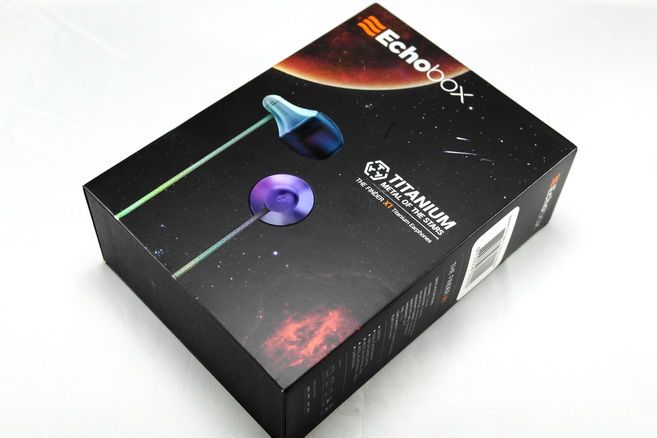
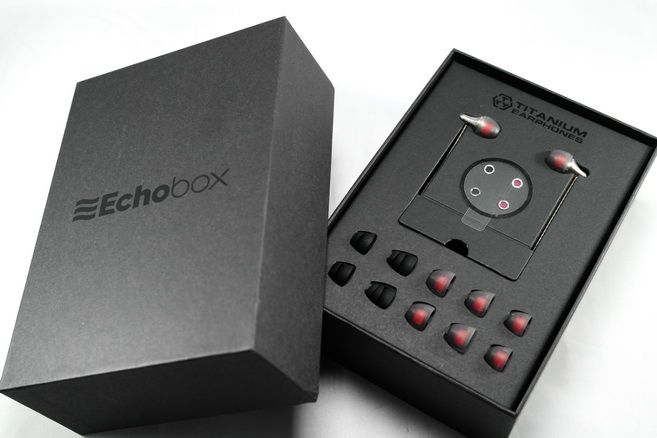
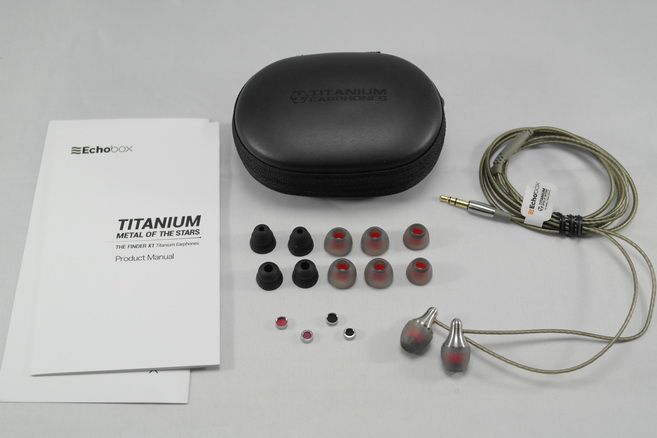
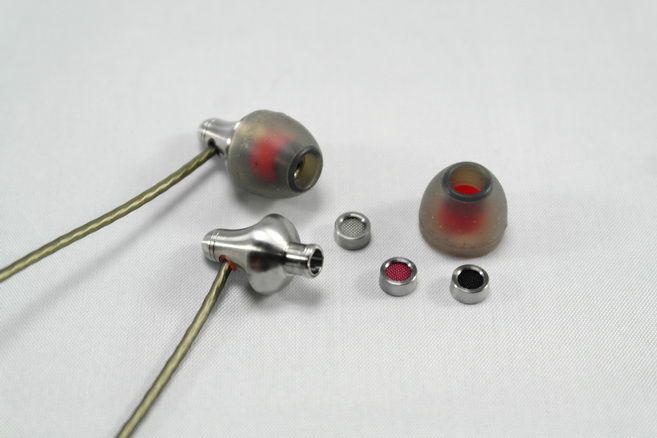

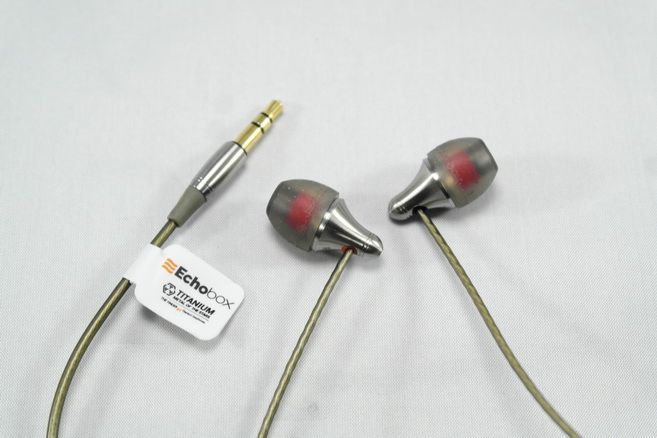








 . The size and shape is it's most unique aspect. It looks cool in hand and simply disappears in ear. I love its minimalist design and how the cable comes out of the IEM and the manufacturer's clever strain relief system. I worry that the strain relief concept won't work but only time will be able to answer that question. The cable itself feels really good in hand having just the right amount of heft and bounce.
. The size and shape is it's most unique aspect. It looks cool in hand and simply disappears in ear. I love its minimalist design and how the cable comes out of the IEM and the manufacturer's clever strain relief system. I worry that the strain relief concept won't work but only time will be able to answer that question. The cable itself feels really good in hand having just the right amount of heft and bounce.

















Took them for a spin a few minutes ago, after not using mine for over a year: Wow, these are total garbage.
I paid 30 bucks for this, I think Echobox went defunct when I got these, hence the low price.
Not worth even 5 freedom eagles.